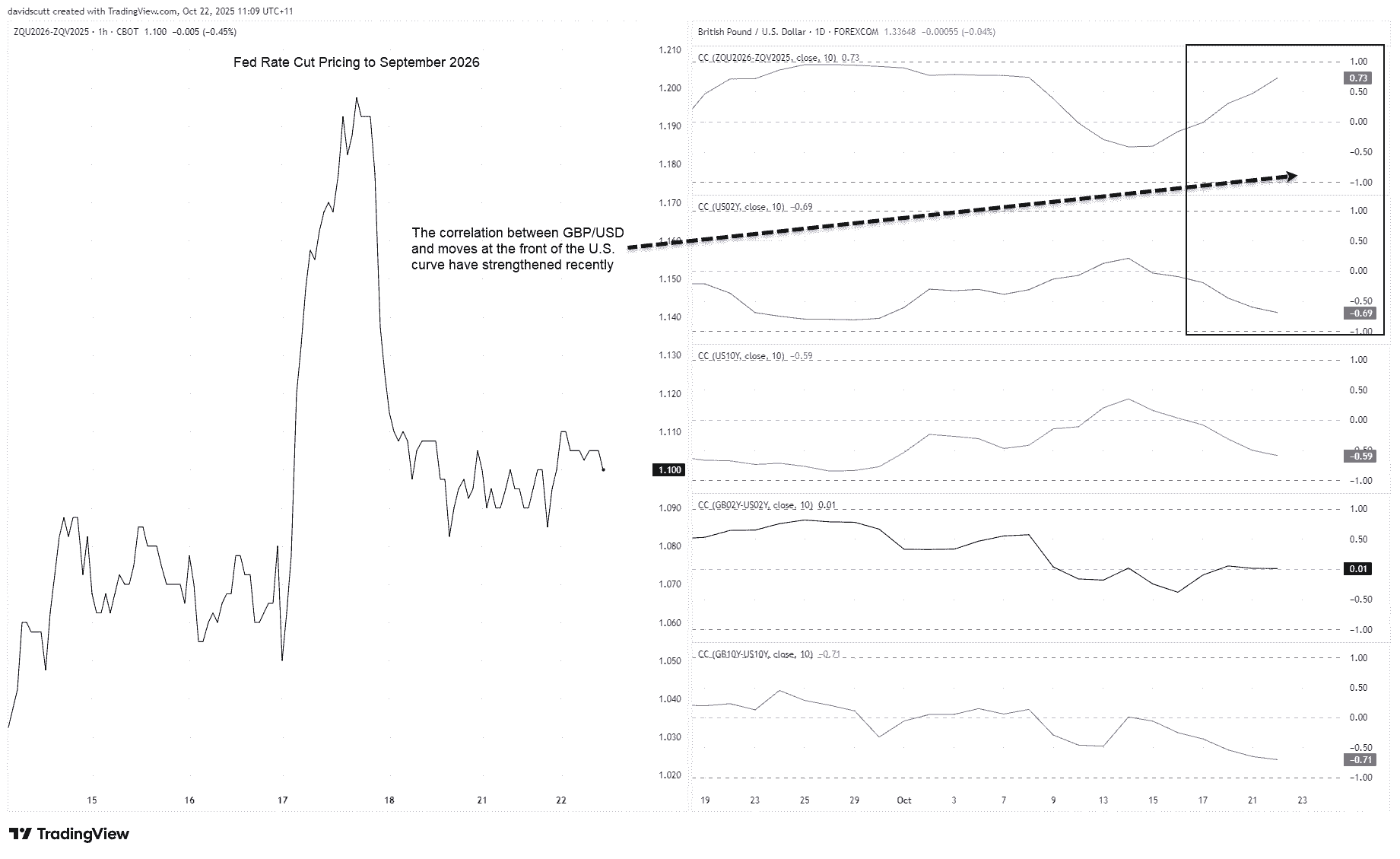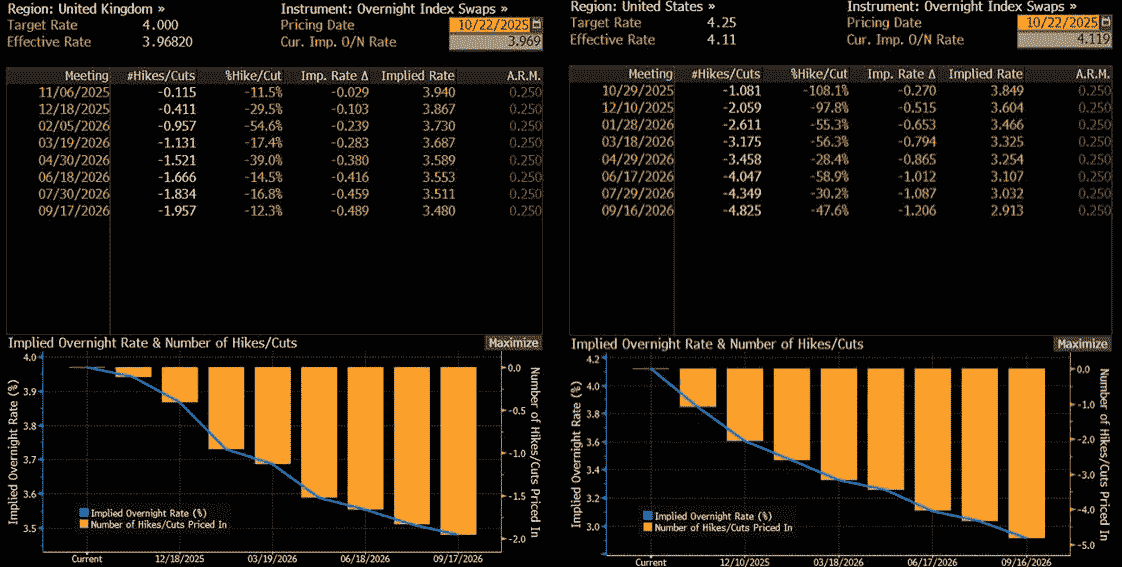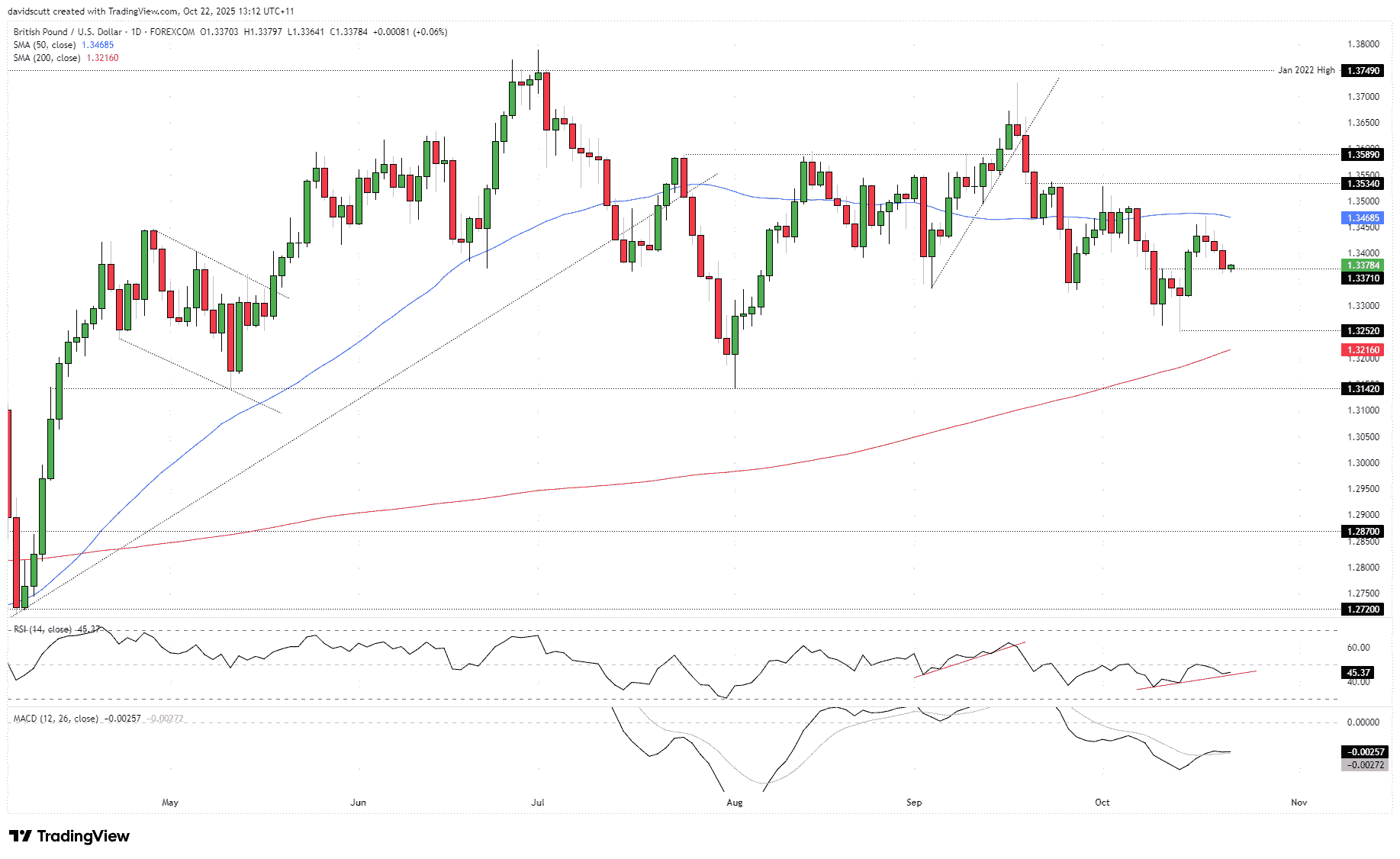TSX gains after CPI shows US inflation rose 3%
The battle of the inflation prints is on, but GBP/USD traders may want to watch Friday’s US data for the real market-moving punch.
- Correlation with the US rates is increasing.
- US CPI likely trumps UK inflation.
- Fed cuts priced deeper than BoE.
Summary
GBP/USD faces a pivotal week as inflation reports from both sides of the Atlantic collide. Correlations with US rate expectations are growing, likely making Friday’s CPI the key driver over the UK print. With Fed easing bets priced deep and technicals flashing caution, any shift in US outlook could tip the scales for GBP/USD.
US Rates Relationship Strengthens
GBP/USD has shown an increasingly strong relationship with movements at the front of the US interest rate curve over the past fortnight, recording correlation coefficients with market pricing for Fed rate cuts out to September next year and 2-year US Treasury yields of 0.73 and -0.68 respectively. Not strong by any stretch of the imagination, but certainly more meaningful than what was seen earlier this month.
Source: TradingView
Interestingly, the relationship between short and longer-dated yield differentials between the US and UK has either been insignificant or contrary to what fundamentals would suggest, meaning the US rate outlook likely matters more for GBP/USD right now.
Backing that view out, it hints that in the battle of this week’s inflation reports, it’s the U.S. data on Friday that may pack more market-moving clout. Details of what’s expected from both reports are shown below. The following link will also take you to a more in-depth preview of what to look out for in the U.S. report.
Source: TradingView
Fed Cut Pricing Dwarfs BoE
Heading into the inflation prints, the U.S. swaps curve points to a far larger and quicker pace of easing from the Federal Reserve relative to the Bank of England, not only reflecting where markets assess the relative neutral policy level sits in both nations, but also the very public desire of the U.S. President to see lower interest rates.
Source: Bloomberg
While it’s not the only factor, with the Fed expected to cut nearly five times over the next year with only two priced from the BoE, it’s contributed to the uplift in GBP/USD seen this year. Therefore, should market pricing shift, especially from the U.S. side of the equation, it will likely impact GBP/USD direction.
As conveyed in earlier analysis, when it comes to the balance of risks from the Fed, based purely on economic factors, the risk appears skewed towards less easing than has been priced, not more. All things considered, that would point to upside risks for the dollar should it eventuate.
GBP/USD Technical Analysis

Source: TradingView
Looking at the technical picture for GBP/USD, the price finds itself sitting on 1.3371, a minor level that acted as both support and resistance earlier this month. Over recent days, we saw a three-candle evening star pattern completed, warning of downside risks. They’ve obviously materialised, so the question now is whether that’s it for the move?
Beneath 1.3371, 1.3252, the 200-day moving average, and 1.3142 are the levels to watch. On the topside, a rebound last week stalled just below the 50-day moving average, making it relevant along with 1.3534 and 1.3589.
Momentum indicators are providing marginally bearish signals, with RSI (14) beneath 50 while MACD remains in negative territory. However, with the former trending higher and the latter having already crossed the signal line from below, the overall message is one that points to the need for bears to be cautious about getting too aggressive around these levels.
